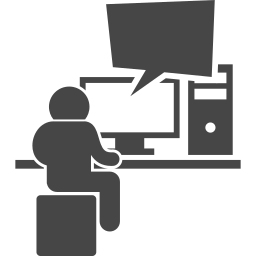 Breathe
Breathe
Breathe

-
Main Ideas
Learning Objective
Understand controlled breathing techniques to improve physiological and immune responses, enhancing overall health and stress management.
Behavioral Objective
Integrate effective breathing techniques into daily life to improve physiological responses and mental health.
Key Thought
Controlled breathing positively affects our stress responses, immune system, and overall well-being, offering extensive health benefits.
-
Main Ideas
Learning Objective
Understand controlled breathing techniques to improve physiological and immune responses, enhancing overall health and stress management.
Behavioral Objective
Integrate effective breathing techniques into daily life to improve physiological responses and mental health.
Key Thought
Controlled breathing positively affects our stress responses, immune system, and overall well-being, offering extensive health benefits.
-
Terms
- 4-7-8 Breathing
noun
A calming breathing technique where you inhale for 4 seconds, hold for 7 seconds, and exhale for 8 seconds. It is effective for reducing anxiety and promoting better sleep.
- Box Breathing
noun
A structured breathing technique that involves inhaling, holding, exhaling, and pausing for equal counts. It is used to improve focus, reduce stress, and enhance mental and physical performance.
- Diaphragmatic Breathing
noun
A breathing technique that involves deep breathing into the diaphragm, rather than shallow breaths into the chest. It promotes relaxation and efficient oxygen exchange, supporting overall health.
- Heart Rate Variability (HRV)
noun
A measure of the variation in time between heartbeats, indicating autonomic nervous system function. Higher HRV is associated with better resilience to stress and improved overall health.
- Innate Immune Response
noun
The body's immediate, non-specific defense mechanism against infections and foreign substances. It acts as the first line of defense, responding rapidly to protect the body, unlike the adaptive immune response, which targets specific pathogens and develops over time.
- Mindful Breathing
noun
The practice of paying deliberate attention to the breath, promoting relaxation and mental clarity. It involves consciously observing the breath's rhythm and flow to reduce stress and enhance well-being.
- Parasympathetic Nervous System
noun
A part of the autonomic nervous system responsible for calming the body and conserving energy. Activating this system through techniques like mindful breathing can reduce stress and promote relaxation.
- Wim Hof Method
noun
A technique combining specific breathing patterns, cold exposure, and meditation to influence the nervous system and immune response. It promotes resilience, increased energy, and stress management.
-
Terms
- 4-7-8 Breathing
noun
A calming breathing technique where you inhale for 4 seconds, hold for 7 seconds, and exhale for 8 seconds. It is effective for reducing anxiety and promoting better sleep.
- Box Breathing
noun
A structured breathing technique that involves inhaling, holding, exhaling, and pausing for equal counts. It is used to improve focus, reduce stress, and enhance mental and physical performance.
- Diaphragmatic Breathing
noun
A breathing technique that involves deep breathing into the diaphragm, rather than shallow breaths into the chest. It promotes relaxation and efficient oxygen exchange, supporting overall health.
- Heart Rate Variability (HRV)
noun
A measure of the variation in time between heartbeats, indicating autonomic nervous system function. Higher HRV is associated with better resilience to stress and improved overall health.
- Innate Immune Response
noun
The body's immediate, non-specific defense mechanism against infections and foreign substances. It acts as the first line of defense, responding rapidly to protect the body, unlike the adaptive immune response, which targets specific pathogens and develops over time.
- Mindful Breathing
noun
The practice of paying deliberate attention to the breath, promoting relaxation and mental clarity. It involves consciously observing the breath's rhythm and flow to reduce stress and enhance well-being.
- Parasympathetic Nervous System
noun
A part of the autonomic nervous system responsible for calming the body and conserving energy. Activating this system through techniques like mindful breathing can reduce stress and promote relaxation.
- Wim Hof Method
noun
A technique combining specific breathing patterns, cold exposure, and meditation to influence the nervous system and immune response. It promotes resilience, increased energy, and stress management.
Introduction
Despite being an automatic process, breathing is a simple yet powerful tool that can significantly improve our physical and mental well-being. When practiced mindfully, breathing techniques can calm the nervous system, alleviate stress, and enhance overall health. By mastering these techniques, we can access a deeper level of self-regulation and resilience, empowering us to navigate life's challenges with greater ease and clarity.
Breathe for Wellness
Conscious breathing, far from being a simple reflex, is a vital practice that directly influences the body's physiological and psychological states. By incorporating conscious breathing into our daily routines, we can significantly impact our health. Techniques like diaphragmatic breathing, box breathing, and alternate nostril breathing can help balance the autonomic nervous system, enhancing the body's ability to cope with stress and promoting a state of calm and relaxation.
The Science of Breath
Each breath we take affects how our body functions. Proper breathing ensures optimal oxygen delivery to cells, supports energy production and aids in the removal of waste products. Shallow or inefficient breathing can increase anxiety and fatigue and reduce cognitive function. Focusing on proper breathing mechanics can improve oxygen exchange, enhance mental clarity, and boost physical performance.
Integrating Breathing Techniques with Physical Activity
Breathing and physical movement are not separate entities, but deeply interconnected. Integrating breathing techniques into yoga, tai chi, and strength training can amplify their benefits. For example, syncing breath with movement in yoga not only improves flexibility and strength but also deepens the mind-body connection. Proper breathing during physical exertion helps maintain stamina, reduces the risk of injury, and enhances overall performance.
Mindful Breathing for Stress Reduction
Mindful breathing is a powerful tool for managing stress and emotional responses. Practices such as deep belly breathing, where you inhale deeply into the diaphragm, can activate the parasympathetic nervous system, promoting relaxation and counteracting the effects of the fight-or-flight response. Regular practice of mindful breathing can lower cortisol levels, reduce blood pressure, and improve sleep quality, making it an essential component of stress management.
The Wim Hof Method
The Wim Hof Method is a popular breathing technique that combines specific breathing patterns with cold exposure and meditation. This method has been shown to influence the autonomic nervous system and immune function, offering benefits such as improved mood, increased energy levels, and enhanced resilience to stress. Through controlled hyperventilation followed by breath retention, the Wim Hof Method helps reset the body's stress response, promoting healing and mental resilience.
Breathing Techniques for Emotional Balance
Breathing exercises are not just about physical health, but also helpful in emotional regulation. Techniques like box breathing (inhaling, holding, exhaling, and pausing for equal counts) and alternate nostril breathing can help manage anxiety, reduce irritability, and improve focus. By consciously controlling our breath, we can influence our emotional state, making it easier to respond to challenging situations calmly and clearly.
Physiological Impacts of Breathing Exercises
Breathing exercises have profound effects on the body's physiology. They help regulate the limbic system, the brain's center for emotional and stress responses. By practicing mindful breathing, we can reduce the production of stress hormones like cortisol, lower heart rate, and improve heart rate variability-a key indicator of nervous system health. This nervous system regulation enhances overall resilience, making us better equipped to handle physical and emotional stressors.
Long-Term Benefits of Regular Breathing Practices
Incorporating regular breathing practices into daily life offers long-term physical and mental health benefits. Consistent practice can improve lung capacity, support cardiovascular health, and enhance immune function. Mentally, it can lead to greater emotional stability, increased mindfulness, and improved concentration. Over time, these practices can contribute to a more balanced, harmonious state of being, where the body and mind work together to maintain health and well-being.
Exploring Different Breathing Techniques
Various breathing techniques cater to different needs:
- Diaphragmatic Breathing: Also known as belly breathing, this technique focuses on using the diaphragm to inflate the lungs fully. It is particularly effective for reducing anxiety and promoting relaxation.
- Box Breathing: A technique used by athletes and military personnel, it involves inhaling, holding, exhaling, and pausing for equal counts. It helps improve focus and manage stress.
- Alternate Nostril Breathing: Commonly used in yoga, this technique involves breathing through one nostril at a time, balancing the left and right hemispheres of the brain, and enhancing mental clarity.
- 4-7-8 Breathing: A calming technique that involves inhaling for 4 seconds, holding the breath for 7 seconds, and exhaling for 8 seconds. It is effective for calming the mind and improving sleep.
Practical Tips for Effective Breathing
- Create a Daily Practice: Set aside a few minutes each day to practice mindful breathing. Consistency is key to reaping the benefits.
- Focus on Posture: Good posture is essential for optimal breathing. Sit or stand up straight to allow the diaphragm to move freely.
- Incorporate Breathing into Activities: Use breathing techniques during activities such as walking, stretching, or meditation to enhance their effects.
- Be Patient: Like any skill, mastering breathing techniques takes time. Start with short sessions and gradually increase the duration as you become more comfortable.
Final Thoughts
Remember, breathing is not just a simple act, but a powerful tool that can transform your health and well-being. By integrating mindful breathing techniques into your daily routine, you can reduce stress, enhance mental clarity, and promote physical resilience. Embrace the power of breath as a key element in your wellness journey, and experience its profound impact on your overall quality of life.
Daily Mindful Breathing Practice
Objective: Develop a consistent mindful breathing practice to reduce stress and improve overall well-being.
Activity:
- Set aside 5-10 minutes each day to practice mindful breathing.
- Sit or lie down in a comfortable position and focus on your breath.
- Inhale deeply through your nose, allowing your belly to rise, and then exhale slowly through your mouth, letting go of any tension.
- Continue this pattern, paying attention to the sensation of the breath and how your body feels with each inhale and exhale.
- At the end of your practice, reflect on any changes in your mood or physical state.
Integrating Breathing with Movement
Objective: Enhance the benefits of physical activity by incorporating conscious breathing techniques.
Activity:
- Choose a physical activity, such as walking, yoga, or stretching.
- Focus on coordinating your breath with your movements. For example, inhale deeply as you lift your arms during yoga, and exhale as you lower them.
- During a walk, try matching your breath to your steps-inhale for four steps and exhale for four steps.
- Practice this integrated breathing technique for at least 10-15 minutes, paying attention to how it affects your energy and focus.
- Afterward, note any changes in your physical performance or mental clarity.
Breathing for Better Sleep
Objective: Use breathing exercises to promote relaxation and improve sleep quality.
Activity:
- Before going to bed, find a quiet and comfortable space where you can sit or lie down without distractions.
- Practice the 4-7-8 breathing technique: Inhale deeply through your nose for a count of 4, hold your breath for a count of 7, and then exhale slowly through your mouth for a count of 8.
- Repeat this cycle 4-6 times, focusing on the sensation of your breath and releasing any tension from your body.
- If your mind starts to wander, gently bring your focus back to your breathing.
- After completing the exercise, notice any changes in your relaxation level and how easily you fall asleep.
Course Outline
![]() Session Expired from Inactivity
Session Expired from Inactivity
Do you want to?
9618 Jefferson Highway, Suite D-191
Baton Rouge LA 70809-9636
(888) 424-0032 |
support@supplementrelief.com
* Disclaimer: This page is available exclusively for SupplementRelief.com clients. None of the information on this website is intended to replace your relationship with your healthcare provider(s). Nothing should be considered medical advice. The information, knowledge, and experience shared on this website are the opinions of SupplementRelief.com. This site and its content are intended to enhance your knowledge base as YOU MAKE YOUR OWN HEALTHCARE DECISIONS in partnership with your qualified health professional.
* These statements have not been evaluated by the Food and Drug Administration. These products and services are not intended to diagnose, treat, cure, or prevent disease.
* There is NO GUARANTEE OF SPECIFIC RESULTS for the products or services offered, and the RESULTS CAN VARY for each individual. Any results claimed by our customers are based on individual experiences that are unique and cannot be guaranteed.
FirstFitness Nutrition and NuMedica may be promoted and sold on the internet ONLY by Authorized Resellers who have been approved by and have registered their website domain with these companies. They strictly prohibit, and actively monitor, the UNAUTHORIZED SALE or RESALE of their products in ALL online public shopping portals including Amazon, eBay, and others and into other countries. All products purchased in SupplementRelief.com are for PERSONAL USE ONLY and CANNOT BE RESOLD to others. Please report violations of Reseller Policy directly to FirstFitness Nutrition at 800.621.4348 and to NuMedica at 800.869.8100.
The content and photographs on this website are copyrighted or Licensed Material and may not be downloaded for other than personal use. Republication, retransmission, reproduction, or any other use of the content or photographs is prohibited. ©2010-2024 SupplementRelief.com.
Are you sure you want to remove this item?






